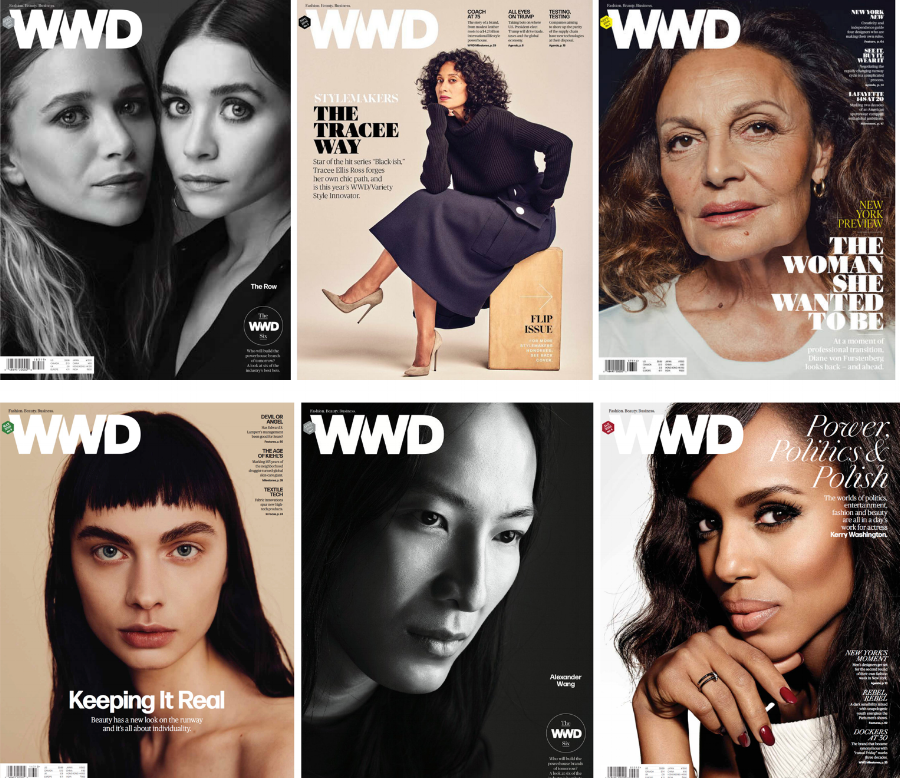
images: WWD
Fairchild Fashion Media announced on Monday that it will take an undisclosed stake in FashInvest, a website dedicated to fusing the worlds of fashion and finance. The deal – which, according to Penske Media Corporation (“PMC”) chairman and CEO Jay Penske, will enable Penske Media and its subsidiary Fairchild Media “to deepen our coverage of emerging companies, start-ups, and the financial institutions that are shaping the future fashion industry,” – is the second in as many months for PMC.
Women’s Wear Daily’s parent company has embarked on something of an acquisition spree, after picking up Sourcing Journal, “the premiere media brand for global executives focused on the sourcing and manufacturing industries,” in October, a purchase that WWD reported “advances Fairchild’s and WWD’s leadership position in today’s fashion and retail business coverage.” Before that, PMC acquired Robb Report, a luxury-oriented reporting service, in December 2016, adding to its existing holdings of Deadline.com, Variety, Variety.com, HollywoodLife, IndieWire, and India.com, among others.
These recent acquisitions come just over three years after Los Angeles-based PMC first announced that it would purchase Fairchild Media – which included the WWD, Footwear News, M Magazine, and Beauty Inc. titles – from Condé Nast for a reported (but unconfirmed) $650 million. The new additions likely aim to enable WWD, one of its most prized holdings, to maintain its title of one of the most authoritative media outlets in the fashion industry.
As the New York Times noted on the heels of PMC’s WWD acquisition, the fashion trade paper, which was founded in July 1910 by Edmund Fairchild as a daily print trade publication, has undergone shifts in strategy over the years in light of the changing media landscape and an increasing number of new entrants into the market.
WWD “shifted focus in the 1990s,” for instance. “The industry wanted the paper to be about the industry,” Patrick McCarthy, the former editorial director of WWD, told the Times a few years ago. So, it appointed “Ed Nardoza, a well-respected reporter who started his career at Fairchild in 1978, as editor-in-chief in 1991.” In that role, Nardoza helped lay the foundation for some of what WWD is today. For instance, he “fostered authoritative writers like the executive editor Bridget Foley, whose opinions are scrutinized by fashion insiders.”
To modernize further, WWD – under the watch of Nardoza – provided readers with insightful industry scoops that they could find elsewhere (an exclusive about how LVMH was in talks with Proenza Schouler to acquire a stake in the New York-based brand, anyone? … or more recently, an all-encompassing look at the business model of Kim Kardashian). To coincide with the public’s mass obsession with celebrity, WWD swapped its coverage of “the wealthy Upper East Side ladies that John Fairchild made famous when he was named editor-in-chief in 1960” for photographs of buzzy celebs in designer garments.
Fast forward to 2010, and longtime editor Peter Kaplan was named Fairchild’s editorial director. Kaplan, as former WWD staffers told the Times, had “an eye on creating buzz and making WWD’s website newsier,” a necessary step in response to the industry’s – and the world’s – steadfast reliance on digital news and increased attention to social media as a place for news discovery, including then-budding platforms like Twitter, which got its start in 2006.
And still yet, within the past couple of years, WWD announced two of its most significant shake-ups to date. The now-107-year old publication made headlines in April 2015 when it revealed that it would cut down its daily print schedule to launch in a new weekly format. “To be clear,” read an article in print and also posted to WWD’s site, “this doesn’t mean we’re discarding daily journalism. On the contrary, we’re doubling down with an enhanced and invigorated WWD.COM where you’ll see deeper editorial content, more breaking news and more stories around the clock.”
Why change, WWD asked? Well, “in a media age where algorithms, aggregation and native content have reshaped and destroyed many news organizations, WWD’s core values and mission remain. Get the story first. Be right. Be fair. And if an eccentric personality or two make things interesting along the way, so be it.”
Skip forward again, this time to late 2016. Miles Socha, WWD’s former European editor, had been tapped to fill Nardoza’s shoes as editor-in-chief and firmly cement WWD into the new era of digitally-dominated media, and it was with him at the top of the masthead that WWD made its digital ambitions known in the most significant manner to date. In February 2017, WWD announced that it would do away entirely with its regular, weekly print editions and instead, utilize print only on special editions.
“In some ways,” WWD stated at the time, “this change may seem like a technology story,” but the publication insisted there was more to it than that. As Socha wrote in his editor’s letter shortly after his appointment as editor-in-chief of what he said “is often called the bible of fashion,” WWD “plans to continue investing in journalistic excellence to deliver more powerful and indispensable content.” As indicated by PMC’s recent acquisitions, which so clearly complement the work of WWD, its recent changes and additions are, in fact, “ultimately, about content.”










